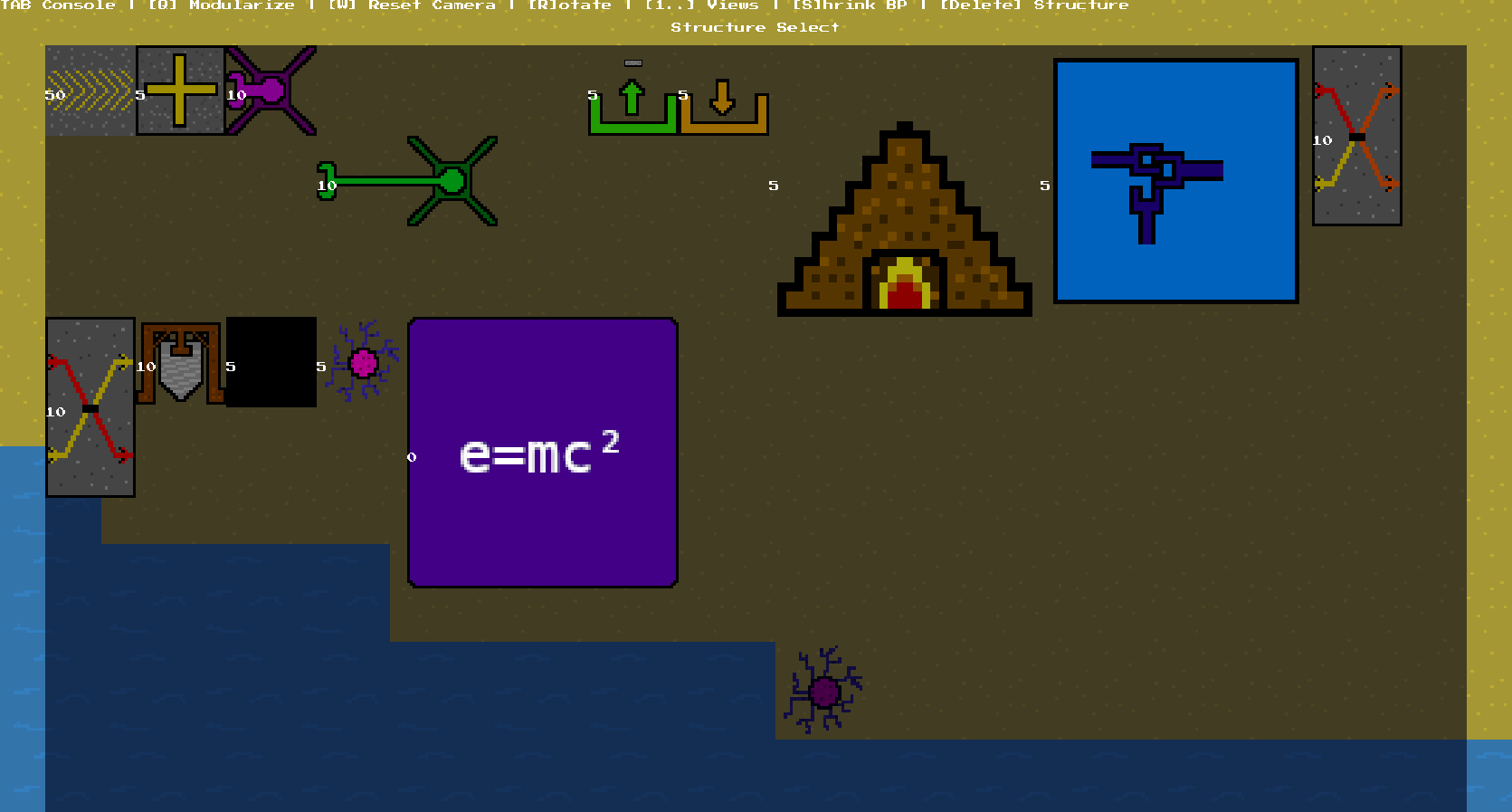UI overlays
I changed the different views to be rendered as overlays above the planet.
I also added titles to the overlays so it becomes more clear what the purpose of a view is.

Relative render depth
There was no way to set relative Z or Depth values for rendering (this determines if an object is rendered above/below another one).
Initially there was only
pub enum DepthLayer {
Default,
...
Effects,
EffectsTop,
TechOverlay,
Fixed(f32),
}
which made it practically impossible to have relative Depth relationships without keeping track of the current value and using Fixed.
For example the Items on a Belt should always be rendered above the Belt.
I introduced new types to allow setting both relative and absolute Depth values
pub enum Depth {
Absolute(DepthAbsolute),
Above(u8),
Below(u8),
}
...
pub enum DepthAbsolute {
Default,
Overlay,
Overlay2,
Fixed(f32),
}Prototype build target
I added a new build target which is configured to compile as quickly as possible to make it easier to test changes to the game.
Structure container and simulation improvements
Belts can’t push into every structure anymore
Belts should not be able to fill every building similar to how Arms behave.
To achieve that I introduced PlaceType to track the origin of an Item.
pub enum PlaceType {
General,
FromBelt,
}
Some of the ItemHandler methods now provide or use a PlaceType.
fn try_accept(
&mut self,
module_store: &dyn ModuleStore,
pos_self: &PosRelative,
pos_other: &PosRelative,
x: Item,
pt: PlaceType,
) -> AcceptReject;
fn place(&mut self) -> Option<(PosRelative, Item, PlaceType)>;Cache interaction pairs
For every simulation tick and every Structure there were ‘collision’ checks for the Structures active interaction functions. E.g. the place or take positions of an Arm. This was pretty expensive to do.
So now those ‘interaction pairs’ are calculated once and then reused for the interaction step of the simulation.
The ‘interaction pairs’ can be cached until a Structure is added, removed or rotated.